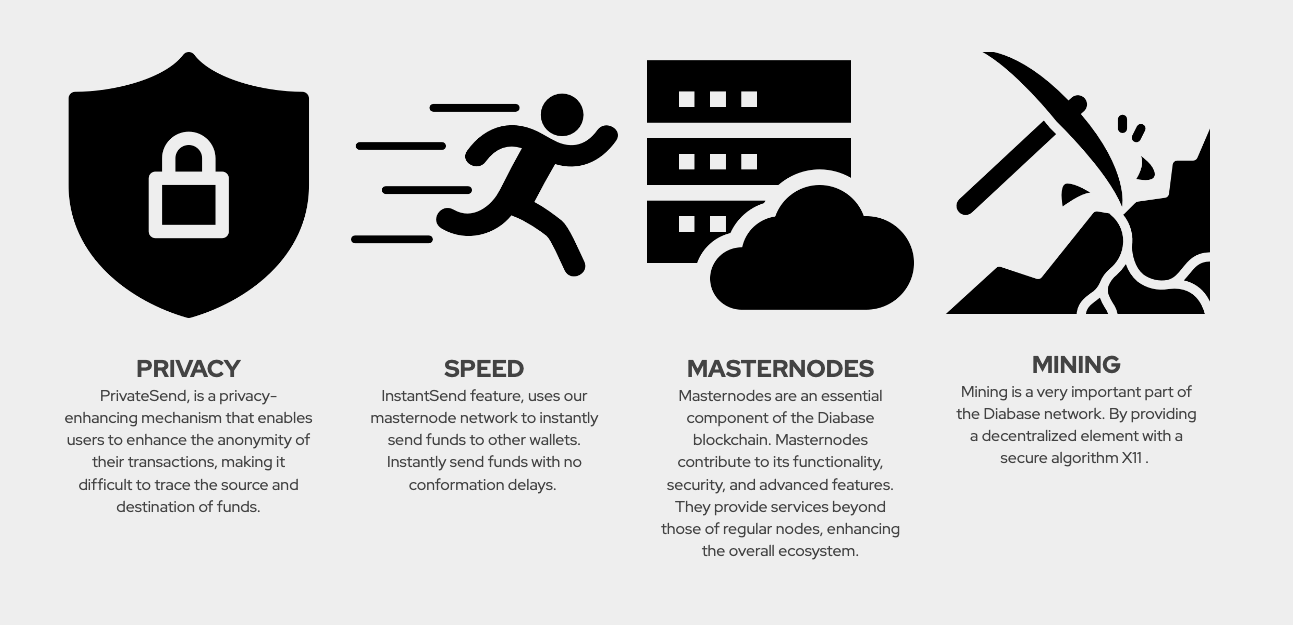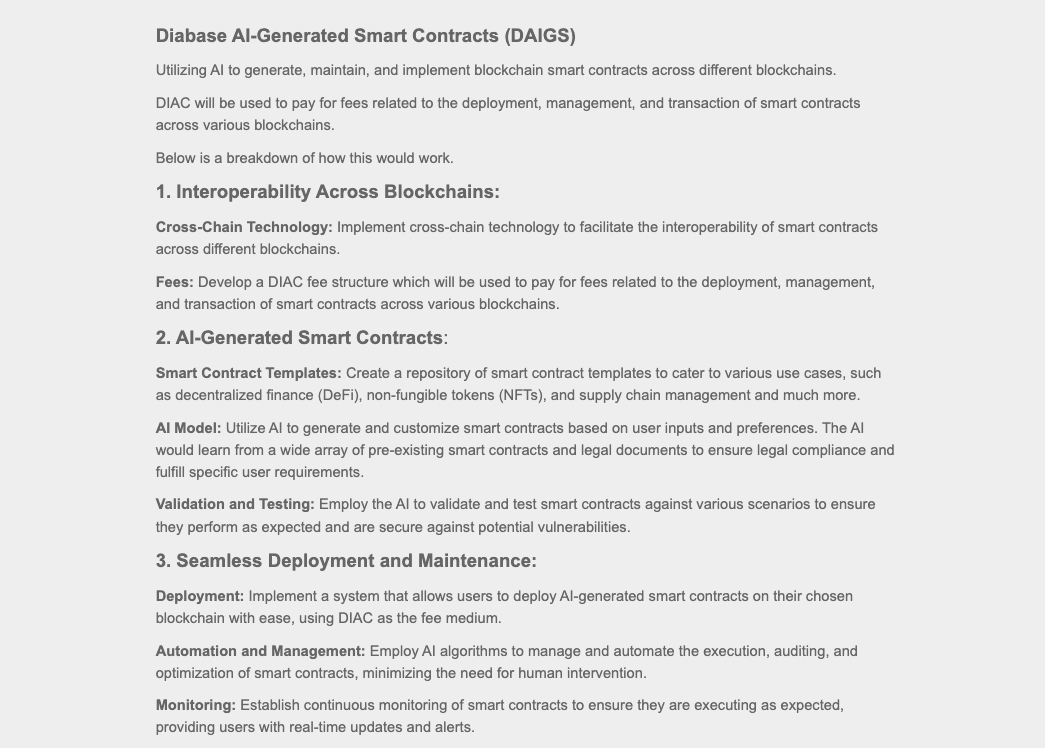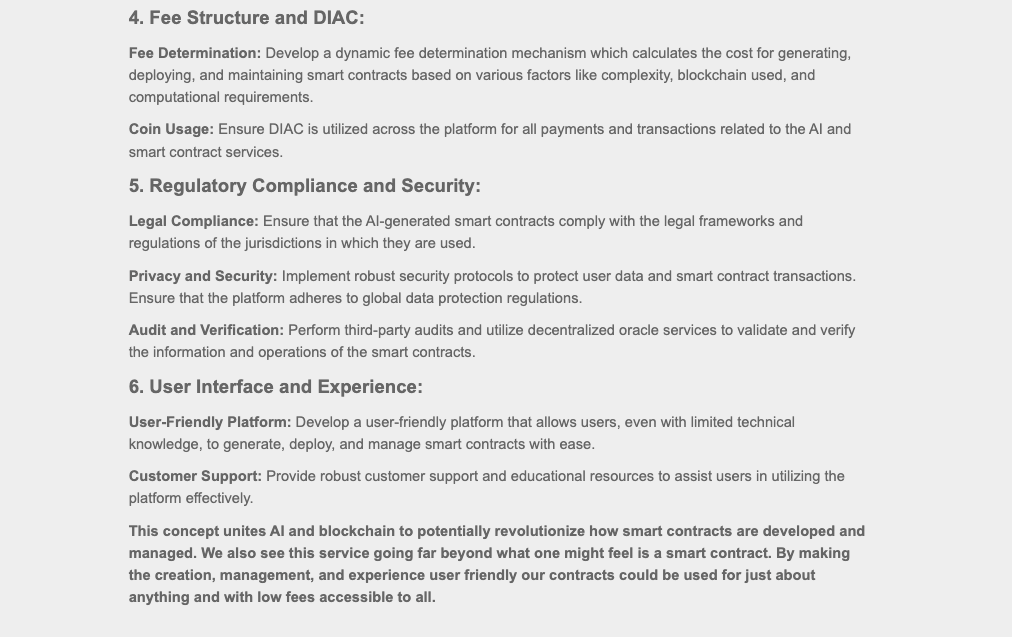Altcoinist Review: $DIAC, Diabase Chain

Shaping the future of financial sovereignty with Diabase.
- Launch Date: First block mined on August 4th, 2023.
- Market Cap: $3,5M
- No Premine or Dev Fees: DIAC was launched without any premining and does not levy development fees.
- Algorithm: X11 Proof of Work (PoW) algorithm (as $OCTA or $BLOCX), compatible with CPU, GPU, and ASIC mining.
- Difficulty Adjustment Algorithms: Uses both Kimoto Gravity Well (KGW) and Dark Gravity Wave (DGW) for adjusting mining difficulty.
- DIAGS: Diabase AI-Generated Smart Contracts
- PrivateSend: A privacy-enhancing mechanism that enables users to enhance the anonymity of their transactions, making it difficult to trace the source and destination of funds.
- InstantSend Feature: Provides an average confirmation time of 0.5 seconds for transactions.
- Block Time: 90 seconds, equating to 960 blocks per day or approximately 350,400 blocks per year.
- Block Reward Structure: 5 coins per block, distributed as 80% to miners and 20% to masternode operators.
- Block Reward Reduction: Halving every 350,400 blocks, which equates to a 50% reduction per year.
- Total Coin Supply: Capped at 3,600,000 coins.
- Block Maturity: Set at 101 blocks.
- Transaction Confirmations: Requires 6 confirmations for a transaction.
- Upcoming Developments: Includes the launch of iOS & Android wallets, a marketing campaign, Tier 2 exchange listing, mining software implementation, and development of the 2024 roadmap, community building, the introduction of a smart contract bridge and AI smart contract tool, and a Tier 3 exchange listing.

1. Technical Infrastructure:
- Algorithm (X11): DIAC is built on the X11 algorithm, a chained hashing algorithm employing a sequence of eleven cryptographic hashes for its proof-of-work system. This choice enhances both security and efficiency, making the blockchain less susceptible to hash rate fluctuations and providing a more stable mining environment.
- Layer1 Blockchain: As a Layer1 blockchain, DIAC is the foundational layer upon which applications and additional layers can be built. This enables the blockchain to support a wide range of decentralized applications (dApps), smart contracts, and other blockchain-based services.
- Consensus Mechanism: DIAC combines Proof of Work (POW) and Proof of Stake (POS) in its consensus mechanism. This dual approach balances the energy-intensive nature of POW with the more energy-efficient POS, aiming for both security and scalability.
2. Masternode System:
- Function and Collateral: Masternodes in DIAC provide advanced network services like InstantSend and PrivateSend. Operators must hold a significant amount of DIAC as collateral, which aligns their interests with the network's health and security.
- Network Services:
- InstantSend: Allows for near-instant transaction confirmations, crucial for time-sensitive transfers.
- PrivateSend: Utilizes CoinJoin mixing to enhance transaction privacy, breaking the traceability of transactions.
- Decentralized Governance: Masternodes also play a role in governance, enabling a decentralized decision-making process within the network.
3. Unique Features:
- PrivateSend (Anonymity Feature): By using CoinJoin, PrivateSend obscures the links between sender and recipient, enhancing user privacy. This is achieved by mixing multiple transactions into one, making it difficult to trace individual funds.
- InstantSend (Transaction Efficiency): This feature ensures quick transaction confirmations by temporarily locking transaction inputs and utilizing a quorum of masternodes for validation, drastically reducing confirmation times.
- Dark Gravity Wave (DGW): An algorithm that adjusts the mining difficulty for each block. DGW responds to real-time mining power fluctuations, ensuring consistent block times and a stable mining environment.
4. DIAGS (Diabase AI-Generated Smart Contracts):

- AI Integration: DIAGS employs artificial intelligence to generate and customize smart contracts, catering to various use cases like DeFi, NFTs, and supply chain management.
- Cross-Chain Compatibility: It supports cross-chain interoperability, allowing smart contracts to function across different blockchain networks.
- User-Centric Design: AI algorithms assist in optimizing smart contract deployment and management, reducing the technical barrier for users.

5. Tokenomics:
- Supply Structure: DIAC's max supply is capped at 3.6 million, with a circulating supply of 377k (half locked in masternodes). This scarcity is a key factor in its value proposition.
- Inflation Control: The network issues 4800 DIAC daily, with a halving event planned to further limit supply growth, thus controlling inflation effectively.
- Valuation and Growth Potential: Currently valued at approximately $8,6, $DIAC’s market cap is around $3,5M.
Altcoinist Verdict:
DIAC's choice of the X11 algorithm is a strategic move that offers enhanced security and lowers the barrier for miners, making the blockchain accessible to a broader audience. This inclusivity in mining (which is currently a big narrative) is likely to foster a more decentralized and robust network.
DIAGS propels $DIAC into the future of blockchain tech. By leveraging AI to streamline smart contract creation and management, DIAC is poised to become a leader in cross-chain interoperable solutions, a feature that could revolutionize how businesses and individuals interact with blockchain technology.
#DYOR
